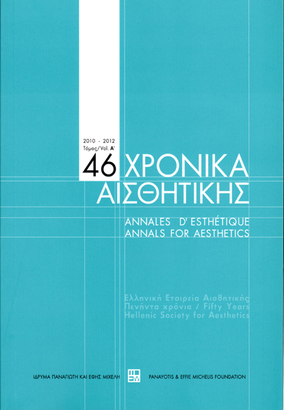Η αρχή και το "τέλος" της ιστορίας της τέχνης
Part of : Χρονικά αισθητικής : ετήσιον δελτίον της Ελληνικής Εταιρείας Αισθητικής ; Vol.45, 2009, pages 251-272
Issue:
Pages:
251-272
Parallel Title:
The beginning and the “end” of the history of art
Author:
Abstract:
The history of art resembles a torch relay race held over time. It presupposes the work of art travels through time, with the art historian responsible for the chronological limits of such a race. That is to say, art history ties historicity to a systematic approach. The first work in modern times to fulfil these requirements was the Geschichte der Kunst des Altertums (1764) by J.J. Winckelmann. The lasting influence of this work is due to, among other things, its novel conception of time. In assessing the development of art of Classical antiquity, Winckelmann was the first to employ human age gradations, that is, birth, the peak of life, old age and decline. The original nucleus of this concept probably goes back, via Scaliger père and fils, to the historian Lucius Annaeus Florus, who dates from the period of Septimius Severus. Winckelmann thereby instituted the idea that the works of Classical art are unsurpassed originals worthy of imitation within a direct flow of time from Antiquity to the present. Thenceforward the idea of the grand narrative as the cohesive factor in art history became established. When, however, after two world wars, each human being in Europe began to seek his own personal frame of reference, the foundations of the grand narrative began to totter. For the history of art, the 1980s represent a decisive turning point. The question now posed is not only, “What is art?”, but “What narrative framework should the history of art now occupy?” Reflection on this matter was the occasion for the various fruitful thoughts examined here.
Subject:
Notes:
Η διάλεξη πραγματοποιήθηκε στις 27 Ιανουαρίου 2010, Περιέχει εικόνες




